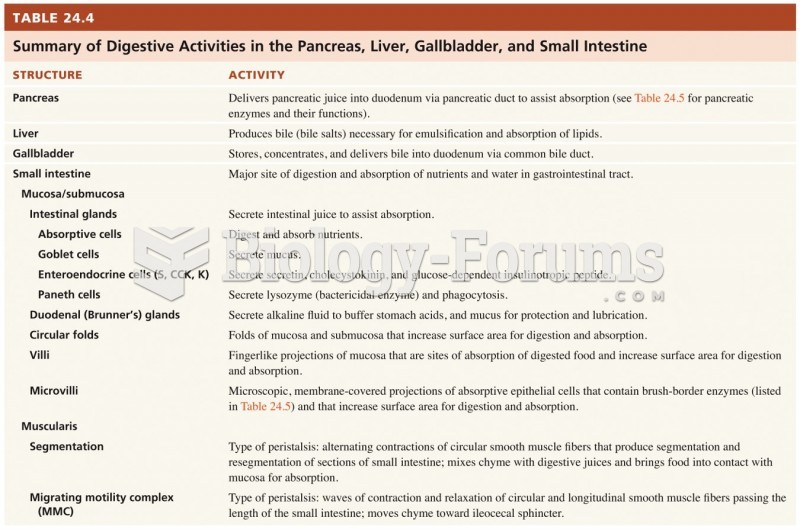Answer to Question 1
Social workers practice at three levels: (a) micro-working on a one-to-one basis with an individual; (b) mezzo-working with families and other small groups; and (c) macro-working with organizations and communities or seeking changes in statutes and social policies. The specific activities performed by workers include, but are not limited to, the following:
1 ) Social casework: Aimed at helping individuals on a one-to-one basis to resolve personal and social problems, casework may be geared to helping clients adjust to their environment or to changing certain social and economic pressures that are adversely affecting them. Social casework services are provided by nearly every social welfare agency that offers direct services to people.
2 ) Case management: Recently, some social service agencies have labeled their social workers case managers. The tasks performed by case managers are similar to those of caseworkers. The job descriptions of case managers vary from service area to service area. According to Hepworth, Rooney, and Larsen, a case manager is a person designated to assume primary responsibility for assessing the needs of a client, arranging and coordinating the delivery of essential goods and services provided by other resources, and working directly with the client to ensure that the goods and services are provided in a timely manner.
3 ) Group work: It seeks to facilitate the intellectual, emotional, and social development of individuals through group activities. In contrast to casework or group therapy, it is not primarily therapeutic (except in a broad sense). Different groups have different objectives, such as improving socialization, exchanging information, curbing delinquency, providing recreation, changing socially unacceptable values, helping to achieve better relations among cultural and racial groups, or explaining adoption procedures and helping applicants prepare for becoming adoptive parents.
4 ) Group therapy: It is aimed at facilitating the social, behavioral, and emotional adjustment of individuals through the group process. Participants in group therapy usually have emotional, interactional, or behavioral difficulties. Group therapy has several advantages over one-to-one counseling, such as the operation of the helper therapy principle, which maintains that it is therapeutic for the helper (who can be any member of a group) to feel he or she has been helpful to others. Group pressure is often more effective than one-to-one counseling in changing maladaptive behavior of individuals, and group therapy is a time-saver in that it enables the therapist to treat several people at the same time.
5 ) Family therapy: It is a type of group therapy aimed at helping families with interactional, behavioral, and emotional problems. It can be used with parent-child interaction problems, marital conflicts, and conflicts with grandparents.
6 ) Community organization: The aim of community organization is stimulating and assisting the local community to evaluate, plan, and coordinate efforts to provide for the community's health, welfare, and recreation needs. It perhaps is not possible to define precisely the activities of a community organizer, but such activities are likely to include encouraging and fostering citizen participation, coordinating efforts between agencies or between groups, performing public relations, providing public education, conducting research, planning, and being a resource person. A community organizer acts as a catalyst in stimulating and encouraging community action. The term community organization is now being replaced in some settings by labels such as planning, social planning, program development, policy development, and macropractice.
7 ) Administration: Administration involves directing the overall program of a social service agency. Administrative functions include setting agency and program objectives, analyzing social conditions in the community, making decisions relating to what services will be provided, hiring and supervising staff members, setting up an organizational structure, administering financial affairs, and securing funds for the agency's operations. Administration also involves coordinating efforts to achieve selected goals, monitoring and revising internal procedures to improve effectiveness and efficiency, and performing whatever functions are required to transform social policy into social services. In social work, the term administration is often used synonymously with management.
Social casework, case management, group work, family work, and community organization constitute the primary professional activities that beginning social workers are likely to provide. All of these activities require counseling skills.
Answer to Question 2
Steps in the problem-solving process are as follows:
1. Identify as precisely as possible the problem or problems.
2. Generate possible alternative solutions.
3. Evaluate the alternative solutions.
4. Select a solution or solutions to be used and set goals.
5. Implement the solution(s).
6. Follow up to evaluate how the solution(s) worked.
A generalist social worker is trained to use the problem-solving process to assess and intervene with the problems confronting individuals, families, groups, organizations, and communities.







